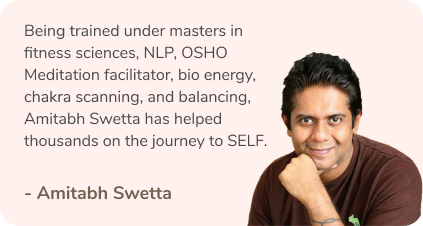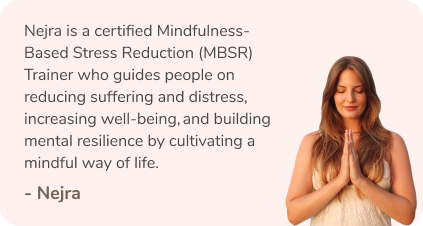Your heart rate or pulse rate represents the number of times your heart beats in one minute. Depending on various factors like stress, age, and physical fitness, the normal resting heart rate falls between 60 to 80 beats a minute. Similarly, your breathing rate is the number of breaths you take per minute, ranging between 12 to 20 a minute. But what is the connection between heart rate and breathing rate?
The Connection Between Heart Rate & Breathing Rate
Your heart rate varies with your breath, increasing as you breathe in and slowing down as you breathe out. This phenomenon is called Respiratory Sinus Arrhythmia or RSA. The heart and lungs work together to ensure there’s enough oxygen in your blood for your body to function properly. The breath is related to both the sympathetic and parasympathetic nervous systems which means it reflects and creates both states of stress as well as relaxation. Our breath has the power to decrease our fight, flight, or freeze response as well as increase our rest, digest, and repair state, improving mental clarity and cultivating calm. This shows a solid connection between heart rate and breathing rate.
This can take place with the help of diaphragmatic breathing. The diaphragm is a large, dome-shaped muscle situated under your ribs, at the base of your lungs. By employing diaphragmatic breathing, you use the diaphragm correctly to breathe right. It also slows down your breathing rate and decreases your oxygen demand.
Benefits of Diaphragmatic Breathing
- Relaxation
- Improvement of muscle function
- Increase of oxygen level in the blood
- Makes it easier to remove gas waste from lungs
- Reduces blood pressure
- Reduces heart rate
When you practice diaphragmatic breathing during a time of sympathetic nervous system arousal, you invite it to slow down and let the parasympathetic nervous system take control. Your stress response decreases, and the flood of adrenaline and cortisol slows down.
How Can You Practice Diaphragmatic Breathing?

- Lie on your back on a flat surface with your knees bent and support beneath your head.
- Place a hand on your upper chest and the other below your rib cage. This enables you to feel your diaphragm as it moves.
- Take a slow deep breath through your nose so that your stomach expands, causing your hand to rise. The hand on your chest needs to remain still while this happens.
- Tighten your stomach muscles, so that your stomach contracts, causing your hand to lower as you exhale. The hand on your chest needs to remain still again.
Deepening your awareness by connecting with your breath and understanding the connection between heart rate and breathing rate will give you the tools to manage your stress better and improve long-term physical, mental, and emotional health.
Try this simple meditation to make your heart rate and breathing rate stable.
Read More: 5 Indian Recipes That You Didn’t Know Were Vegan
Like & Follow ThinkRight.me on Facebook, Instagram, Twitter, Pinterest and Telegram to stay connected.






























